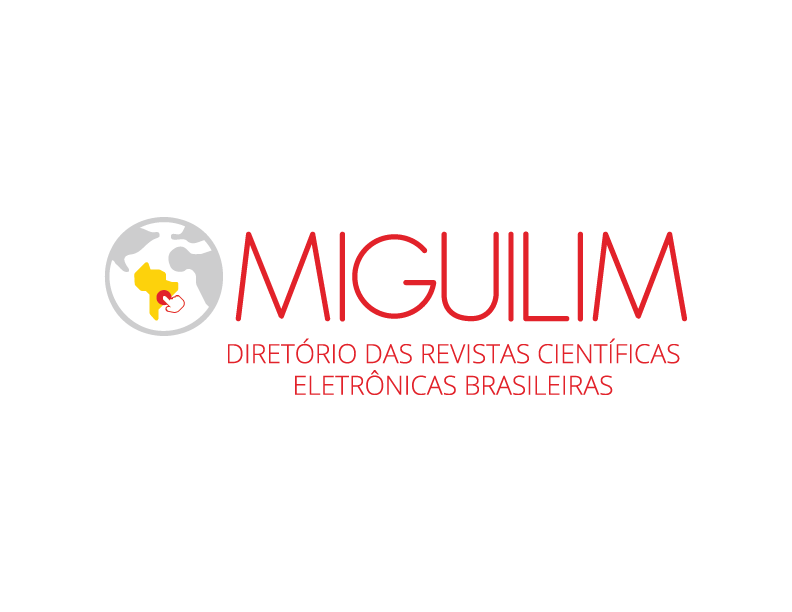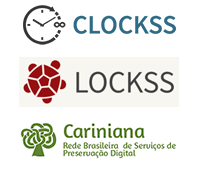The problem of overcrowding and its implications for children's learning in Early Childhood Education in the city of Porto de Moz - PA
DOI :
https://doi.org/10.20873/uft.rbec.e15765Résumé
ABSTRACT. The research investigates how teachers who work in Early Childhood Education in Porto de Moz - PA think about their pedagogical practices and children's learning in the face of the problem of overcrowding in preschool classes. It aims to identify the factors that cause overcrowding in preschool classrooms and their implications for children's learning; as well as examining the difficulties that teachers face in their practices in overcrowded classes. This is a qualitative exploratory study developed in a public school in Porto de Moz-PA, from November to December 2021, through the application of a semi-structured questionnaire directed at three teachers of Early Childhood Education. The results indicate that the overcrowding of classes harms the child's development by not allowing recreational activities, aspects that affect the quality of the teachers' pedagogical work; Also noteworthy is the lack of investment in building more schools in the city, the inadequacy of the physical structure and the lack of support from municipal management, the Municipal Secretary of Education with the education of children and the work of teachers.
Téléchargements
Références
André, M. E. D. A. (2001). Pesquisa em educação: buscando rigor e qualidade. Cadernos de Pesquisa, 113(1), 51-64. https://doi.org/10.1590/S0100-15742001000200003.
Augusto, S. O. (2015). A experiência na Educação Infantil. Porto Alegre: EDIPUCRS.
Barreto, A. M. R. (1998). Situação atual da educação infantil o Brasil. In Brasil. Ministério da Educação e do Desporto. Subsídios para o credenciamento e funcionamento das instituições de educação infantil (pp.23-33). V2. Coordenação Geral da educação infantil. MEC/SEF/COEDI Brasília.
Bazílio, L. C., & Kramer, S. (2006). Infância, educação e direitos humanos. 2.ed. São Paulo: Cortez.
Bondioli, A., & Gariboldi, A. (2012). A vida cotidiana na creche. In Becchi, E., Bondioli, A., Ferrari, M., & Gariboldi, A. (Orgs.). Ideias orientadoras para a creche: a qualidade negociada (pp. 20-35). Campinas, SP: Autores Associados.
Carvalho, M. C., & Rubiano, M. R. B. (2001). Organização dos Espaços em Instituições Pré-Escolares. In Oliveira, Z. M. (Org.) Educação Infantil: muitos olhares (pp. 116-142). 5. ed. São Paulo: Cortez.
Constituição da República Federativa do Brasil. (1988, 05 de outubro). Recuperado de: https://www.senado.gov.br/sf/legislacao/const/
Horn, M. G. S. (2007). Sabores, cores, sons, aromas. A organização dos espaços na educação infantil. Porto Alegre: Artmed.
Horn, M. G. S. (2005). O papel do espaço na formação e na transformação do educador infantil. Revista Criança do Professor de Educação Infantil, 38(1), 29-32.
Kramer, S. (2006). As crianças de 6 nas Políticas Educacionais no Brasil: na educação infantil e/é fundamental. Revista Educação e Sociedade, 27(96), 797-818. https://doi.org/10.1590/S0101-73302006000300009
Lei n. 9.394, de 20 de dezembro de 1996. (1996, 23 de dezembro). Estabelece as Diretrizes e Bases da Educação Nacional. Recuperado de: https://www.senado.gov.br/sf/legislacao/
Lima, E. S. (2001). Como a criança pequena se desenvolve. São Paulo: Sobradinho.
Ministério da Educação. Secretaria de Educação Básica. (2006a). Parâmetros Nacionais de Qualidade para a Educação Infantil. Brasília: MEC/SEF, 1(1).
Ministério da Educação. Secretaria de Educação Básica. (2006b). Parâmetros Básicos de Infraestrutura para a Educação Infantil. Brasília: MEC/SEF, 1(1).
Nunes, M. F. R., Corsino, P., & Didonet, V. (2011). Educação infantil no Brasil: Primeira etapa da educação básica. Brasília: UNESCO, Ministério da Educação/Secretaria de Educação Básica, Fundação Orsa.
Oliveira, Z. M. R. (2002). Educação infantil: fundamentos e métodos. São Paulo: Cortez. (Docência em formação).
Oliveira, Z. M. R. (2010). O currículo na Educação Infantil: o que propõem as novas diretrizes nacionais? Anais do I Seminário Nacional: currículo em movimento – Perspectivas atuais (pp. 1-14). Belo Horizonte, novembro.
Oliveira, Z. M. R. (2011). Educação infantil: fundamentos e métodos. São Paulo: Cortez.
Parecer nº 17 (2012, 06 de junho). Orientações sobre a organização e o funcionamento da Educação Infantil, inclusive sobre a formação docente, em consonância com as Diretrizes Curriculares Nacionais para a Educação Infantil. Brasília. Recuperado de: http://portal.mec.gov.br/index.php?option=com_content&id=17576&Itemid=866
Resende, M. A., & Martins, P. L. O. (2016). A formação de professores para a educação infantil no limiar dos vinte anos da Lei de Diretrizes e Bases da Educação Nacional 9.394/96. Rev. Diálogo Educ., 16(50), 809-829. https://doi.org/10.7213/1981-416X.16.050.DS01.
Resolução nº 5 (2009, 17 de dezembro). Estabelece as Diretrizes Curriculares Nacionais para a Educação Infantil. Brasília, DF. Recuperado de: http://por-tal.mec.gov.br/index.php?id=13684:resolucoes-ceb-2009&option=com_content
Sarmento, M. J. (2003). Imaginário e cultura da infância. Cadernos de Educação, 12(21), 51-69. https://d oi.org/10.15210/caduc.v0i21.1467
Sátyro, N., & Soares, S. (2007). A infraestrutura das escolas brasileiras de ensino fundamental: um estudo com base nos censos escolares de 1997 a 2005. Brasília, DF: Ipea. (Textos para discussão n.º 1267).
Severino, A. J. (2007). Metodologia do Trabalho Científico. 23. ed. São Paulo: Cortez.
Zabalza, M. A. (1998). Os dez aspectos chaves de uma educação infantil de qualidade. In Zabalza, M. A. (Org.). Qualidade em educação infantil (pp. 49-55). Tradução Beatriz Afonso Neves. Porto Alegre: Artmed.
Téléchargements
Publié-e
Comment citer
Numéro
Rubrique
Licence
© Irlanda do Socorro de Oliveira Miléo 2023

Cette œuvre est sous licence Creative Commons Attribution 4.0 International.
Proposal for Copyright Notice Creative Commons
1. Policy Proposal to Open Access Journals
Authors who publish with this journal agree to the following terms:
A. Authors retain copyright and grant the journal right of first publication with the work simultaneously licensed under the Creative Commons Attribution License that allows sharing the work with recognition of its initial publication in this journal.
B. Authors are able to take on additional contracts separately, non-exclusive distribution of the version of the paper published in this journal (ex .: publish in institutional repository or as a book), with an acknowledgment of its initial publication in this journal.
C. Authors are permitted and encouraged to post their work online (eg .: in institutional repositories or on their website) at any point before or during the editorial process, as it can lead to productive exchanges, as well as increase the impact and the citation of published work (See the Effect of Open Access).














